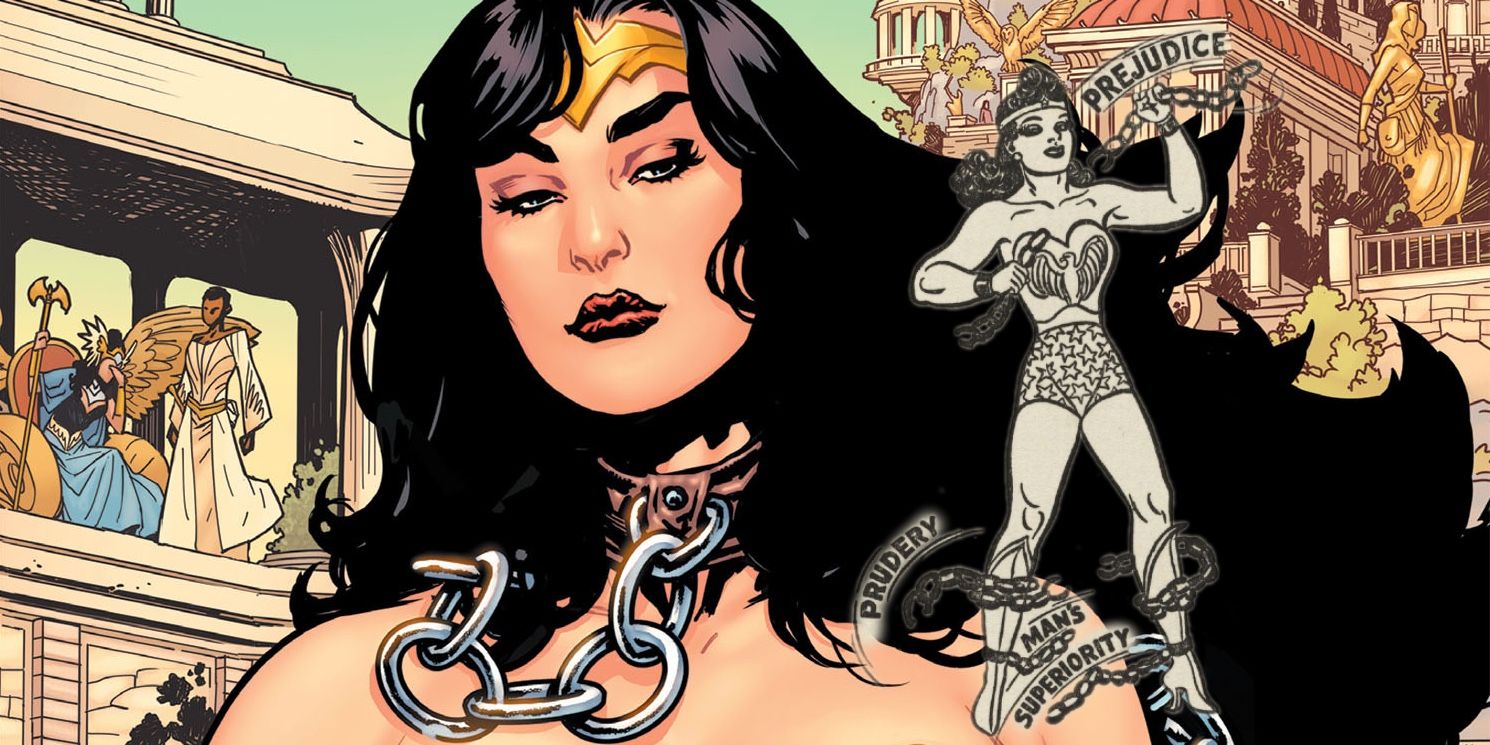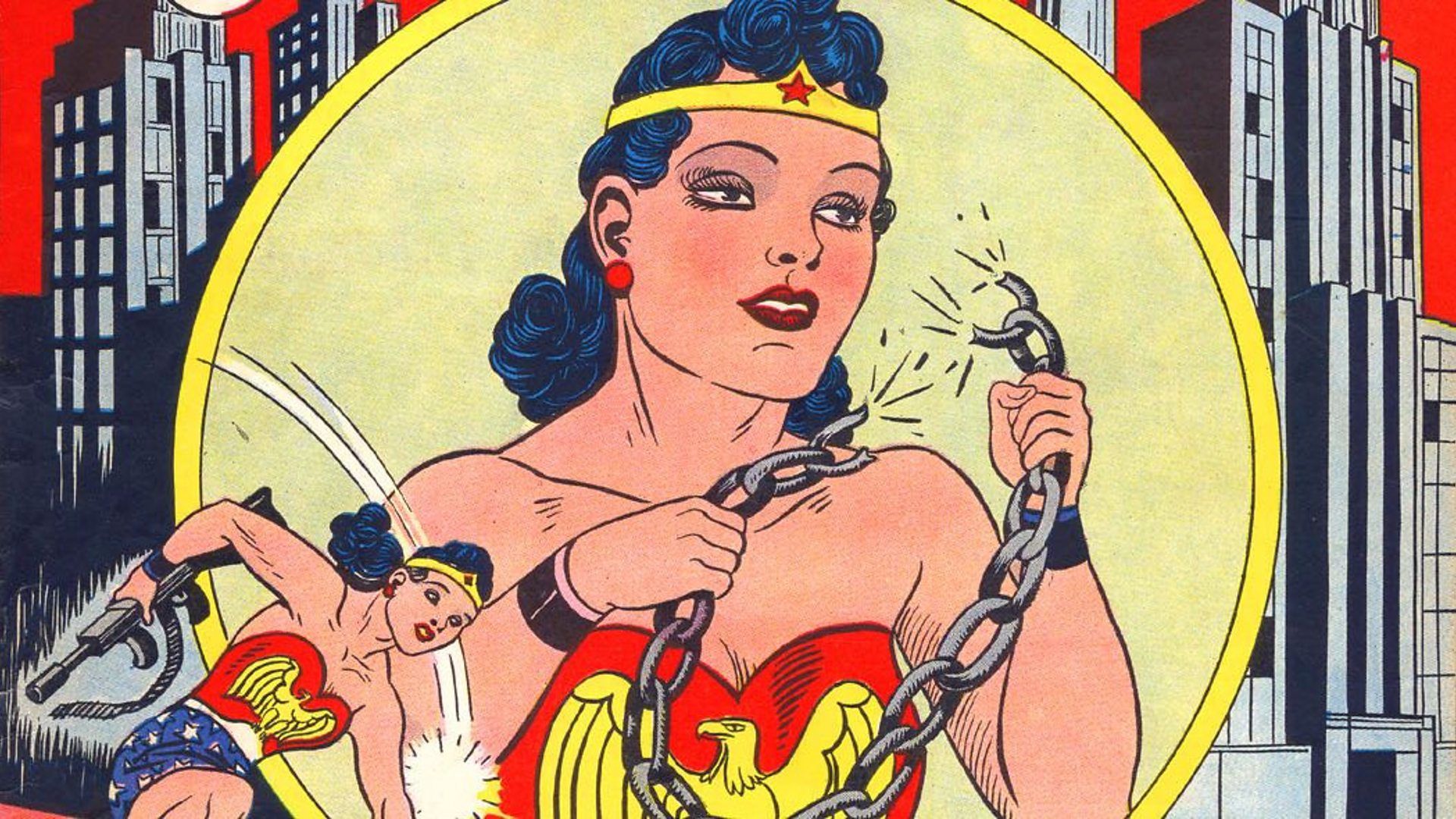In her early years, Wonder Woman aka Diana Prince had the curious habit of getting tied up whenever she was fighting the good fight against the newest threat to cross her path. And while her inception has always been synonymous with the idea of bondage fetishism, Amazonian and Greek lore, and early 1900s feminist and suffrage movements, these aren’t the real reasons as to why Diana got herself caught up in situations that led her to constantly being bound and tied in the first place.
Although not nearly as prevalent of an idea in today’s tales as superhero stories have moved more towards spectacle than anything else (though there are still many that lean into these themes) Wonder Woman’s awesome reason for always getting tied up is a fairly obvious one that gets lost in the shuffle more often than not. Signifying her emancipation from men as she is bonded, chained, tied or controlled, Wonder Woman always found a way to break free from what held her back, allowing her character to continually emancipate herself over and over again, becoming an essential part of her origin that speaks volumes about a character that is as iconic as she is groundbreaking.
Created by William Moulton Marston in 1941, Marston was the inventor of the lie detector and was an early advocate for women’s rights. Having a mutual relationship with his wife and live-in mistress for decades, Marston understood the struggle his loved ones went through and why it was important for his own creation to link back to a hardship that millions of women faced each day. Acting as an actual weakness that would see Diana’s powers lose their potency while bound or chained, Marston slipped subtle feminist commentary into many of his early stories that would go on to define the character for decades to come.
Regaining her powers when she inevitably broke free from her bonds, this empowerment through emancipation idea was a constant one since at the time, women were still fighting an uphill battle on many fronts in striving for equal rights that were mostly imposed on them by men. Using the imagery of chains more often than any other kind of bondage tool, Marston brought in the very real actions of female protestors and suffrage participants who would quite literally wear and utilize chains in numerous symbolic ways as they marched across cities, towns and even the Capitol in an attempt to rally towards a cause that was continually denied to them by the male dominated hierarchy.
Furthermore, and as Wonder Woman became more popular in her initial stories, these ideas of emancipating oneself over and over again became a symbolic sign of freedom that a powerful and respected woman like Diana could repeat as many times as needed. Essential considering women still had to fight for themselves on a daily basis, Wonder Woman stories had to constantly reiterate her need to break free from her chains and come out on top in a world that stifled strong women like her at every turn.
So while there are most definitely undertones to these chains that relate back to bondage, the women’s suffrage movement, feminism and more, the idea of Wonder Woman always being tied up only to break free time and time again was also originally a symbol of Diana – and women in general – emancipating themselves from man’s rule. Wonder Woman has always been a hero of the highest level for both DC Comics' characters and real life people to look up to alike, and with this awesome reason to go along with the rest of the important and influential commentaries stemming from her inception, her place in pop-culture has never been stronger.


